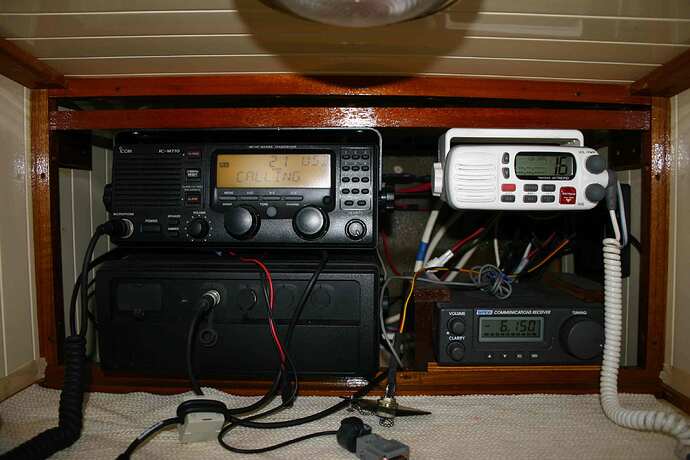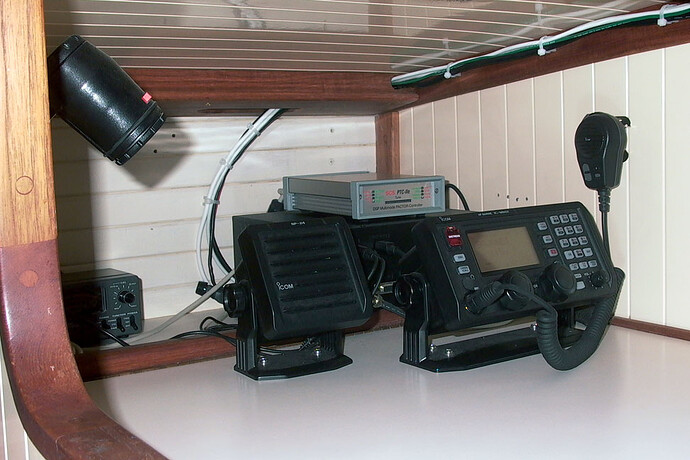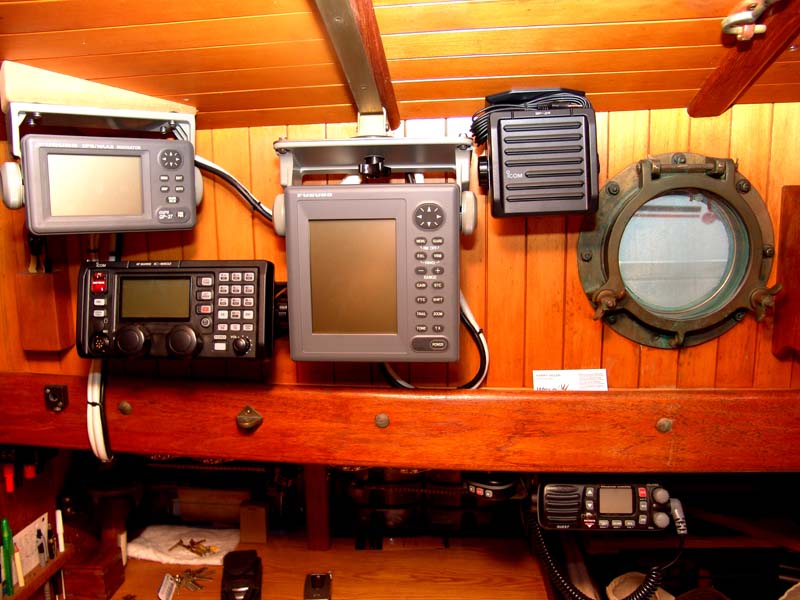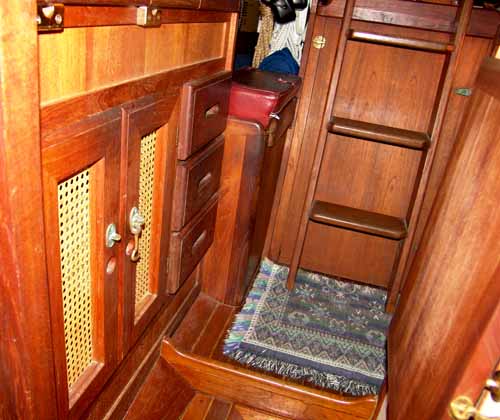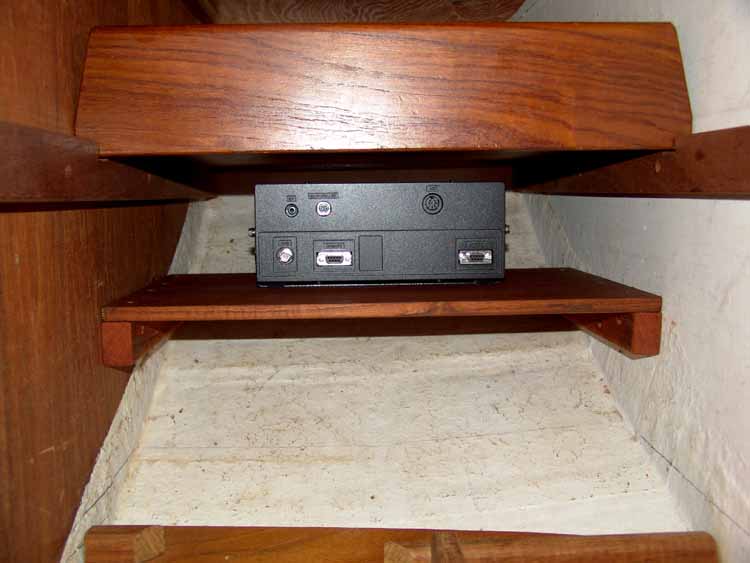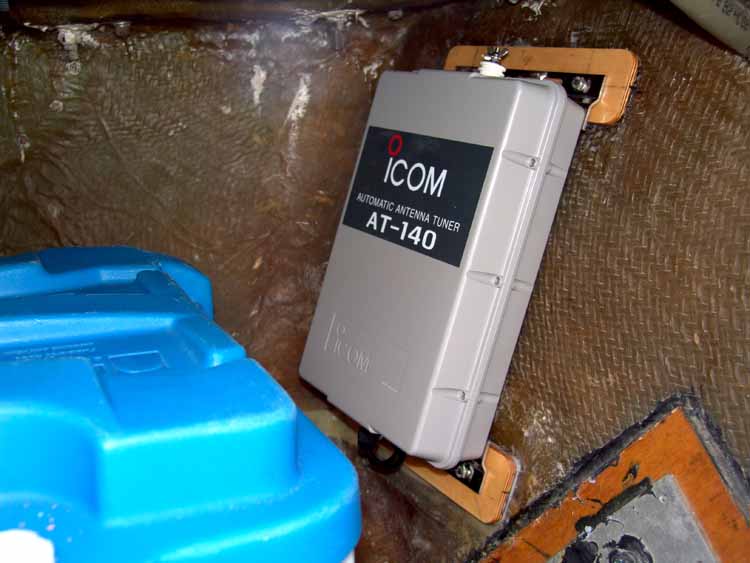Sometimes, I think KISS is the best solution.
We finally purchased an ICOM 802M SSB radio and AT-140 antenna tuner for better or worse. If you are not familiar with the radio, the radio has a remote head and speaker, hence the transceiver can be mounted in “almost” any location. Now the challenge is to find a location to mount the transceiver and antenna tuner without losing too much storage space. In an effort to “do things right” I telephoned ICOM and discussed mounting locations. The ICOM technician was helpful and polite but strongly recommended I employ a marine professional who was very experienced at installing SSB radios and antenna tuners.
ICOM recommended a location that has at least 1 ft of space around each of the sides of the unit, as well as the top. This is to allow sufficient air space for the heat generated by the transceiver to disperse without overheating the unit. Further, the two modules - transceiver, tuner - and cables should not be located too close to other DC wiring or instrument cables. ICOM pointed out the units and their associated cables may cause feedback into other instruments and radios via the DC wiring or other instrument cables. The engine compartment is not recommended because it is hot and RF from the alternator may cause noise in the radio. It was also recommended I read the NMEA standards for installing SSB radios, &C. According to the technician, these were available online. I checked NMEA’s website (http://www.nmea.org/) and for a cost of $270 and $340, I may purchase the standards. Based on my conversation with ICOM, it seems near impossible to install the radio and tuner within the space of a small boat under let’s say 50 ft LOD. Of course, ICOM did admit, sometimes one has to compromise. Unfortunately, the ICOM manual does not include these installation recommendations.
My SSB installation on IDUNA will be as follows. The antenna tuner will be mounted on the starboard side of the transom inside the lazaretto. This will place the tuner about 1 ft from the battery box, approximately 2 ft from the battery cables and at least 3 ft from the fluxgate compass head. I may need to move the fluxgate head, if I detect any interference when transmitting. The remote head and speaker are already mounted on the side of the cabin above the chart table. I will mount the transceiver below the chart table - (note: IDUNA’s interior is different than found on a SLM boat - Canadian BCC). Routing the cables will be a compromise, in terms of DC wiring and other instrument cables , as I suspect it is on most boats.
I am always amazed how electronic components seem so simple in principle to install become so complicated in practice. If I would have known all of the above before I went to the Annapolis boat show, I would have reverted back to KISS-MA principle when we visited ICOM’s booth.
If you have a SSB radio installed in your Bristol Channel Cutter, I am interested how you solved the space limitation and ICOM recommendations when you installed your radio and tuner. In addition, how well does your transceiver work when transmitting and receiving?
Fair Winds,
Rod
